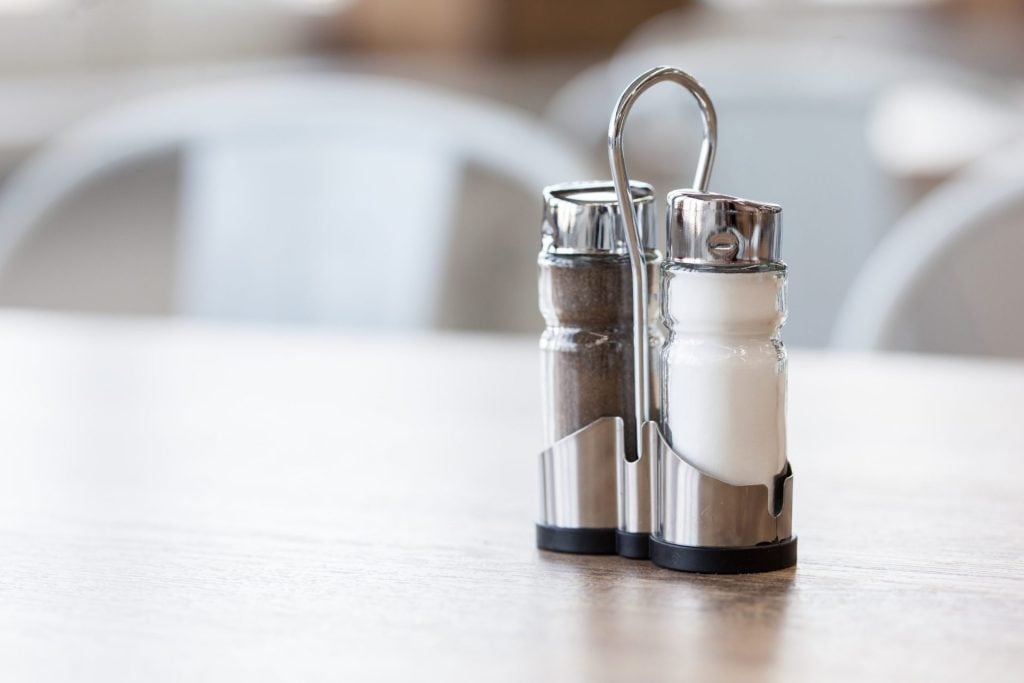BLOGS
How To Keep These 8 Kitchen Spots Germ-Free
A healthy house starts with a clean and safe kitchen. Your family’s risk of exposure to various indoor pollutants, such as germs and allergens like dust mites, will be lowered if your home is clean. Moreover, rats, mice, and other pests are less likely to enter a clean house.
You can find bacteria or germs everywhere, especially in your kitchen where food is cooked, kept, and consumed. Bacteria, which can be found on food, cooking utensils, counters, appliances, floors, pets, and especially your hands, can cause infections. To prevent you and your family from contracting food poisoning, it is crucial to take the essential precautions to clean before, during, and after preparing and consuming your food, which includes cleaning your hands and the surfaces. Keep on reading so that you can make your kitchen clean and germ-free.
The 8 Germiest Place in your Kitchen
-
Germiest Kitchen Spots: Sinks
The number of bacteria in your kitchen sink may surprise you. The kitchen sink is a breeding ground for germs thanks to residual food particles, unclean dishes, and juices from raw meat. As a result, every day that you prepare food in your sink or soak dishes, pots, and pans in it, you should clean it with hot, soapy water and a cloth or sponge
-
Germiest Kitchen Spots: Sponges
Speaking about sponges, there have been a lot of internet conversations regarding the bacteria that can be found in them and how to clean them.
The SpongeBath is a device that employs citric acid to keep the sponge clean and sterile, but if you still want to clean your sponge, you may either microwave it on high for a minute.
-
Germiest Kitchen Spots: Hand Towels
Bad germs love to stick to hand towels. More often than not, we carelessly wipe our hands on our towels, without contemplating what we’re leaving behind. A kitchen towel frequently has raw meat juices, raw eggs from the batter, or even decaying food on it.
The key is to frequently replace them and wash soiled ones in hot water. To kill bacteria, you can also add a teaspoon of bleach to the wash.

-
Germiest Kitchen Spots: Cutting Boards
Cutting boards made of wood can potentially house germs. They may also carry salmonella if used to chop raw meat, which could result in cross-contamination.
After each usage, immerse a cutting board in hot, soapy water to clean it. You can also clean it using a solution of salt, lemon juice, and distilled white vinegar. Think about plastic cutting boards that are dishwasher-safe.
-
Germiest Kitchen Spots: Knobs And Handles
There are numerous door handles and knobs in every kitchen. Those cabinet knobs and handles may be covered in bacteria from regular germs on your hands and food germs found in the kitchen.
You can use a microfiber cleaning cloth and a straightforward mixture of distilled white vinegar and some rubbing alcohol in a spray bottle. Alcohol should destroy the remaining bacteria as vinegar alone kills 98% of them.
-
Germiest Kitchen Spots: Salt And Pepper Shakers
When was the last time you cleaned your salt and pepper shakers with something other than a wet cloth? I bet you never considered them to be a place where germs are being transferred. Every member of your family is handling these things, which means that germs are spreading across the entire family.
-
Germiest Kitchen Spots: Refrigerator Handle
Every day, enormous numbers of people touch the handles of your refrigerator. You can only imagine the number of germs and bacteria that are on those handles when you consider that you are opening the refrigerator with hands that are also used to prepare a meal.
If you can, make it a routine to wipe them down every day. Use the same mixture of white vinegar and rubbing alcohol that was described previously.
-
Germiest Kitchen Spots: Remote Control
Any area in the house’s TV remotes is likely to have a variety of bacteria. The worst of all is the kitchen remote, though. It can be covered in food germs from meal preparation.
Think about storing the remote inside a ziplock bag and using the bag to control it. In this manner, the germs are on the bag rather than in the remote’s numerous crevices and cracks. Alter the bag frequently.
Do you want a gorgeous and clean kitchen with Italian architectural features like cupolas, cobblestone walks, and gabled roofs? That infuses the beauty of the surrounding landscape and light into each luxury home for sale. The first phase of Portofino Alabang, Portofino Heights, offers gorgeous luxury homes and lots for your family.

4 Reasons Why You Should Keep Your Kitchen Clean
There are many good reasons to keep your kitchen tidy. You must devote time and effort to cleaning and arranging your kitchen.
-
To avoid food poisoning
When food is left out or when you don’t wipe up crumbs and other food waste, illness bacteria can thrive and multiply. Cleaning the kitchen thoroughly is essential to avoid the spread of foodborne infections. This covers, at the very least, all utensils, tools, cutting boards, bowls, and surfaces.
-
Avoid strong odors
To get rid of offensive scents, your kitchen should also be kept clean. Walking by an empty trash can that still smells like trash is the worst. Continue to be vigilant about disinfecting the empty bin if it smells even after you take out the trash every night. Another candidate for the worst scent producer is the kitchen sink. Additionally, it’s essential to make sure that no food crumbs are present on any pots, pans, stove parts, or the interior of the oven. Otherwise, they can catch fire the next time you use them, producing smoke or an unpleasant burnt scent.
-
Avoid Spreading to Other Rooms
In addition to producing food for humans, kitchens also serve as an attraction for insects and other pests. Animals are drawn to crumbs that are left on the ground. The fact that they can wind up in other locations that we don’t desire is even more terrible. Imagine entering your kitchen barefoot to get a drink of water before bed. As you make your way to your bedroom, some tasty floor-bound nibbles cling to the soles of your feet. You might even enter your bedroom straight from the kitchen, tracking mud in on your feet.
-
Workplace organization improves safety and productivity
An organized workspace or house is generally pleasant. The nicest farmhouse decor won’t mean much if you have to rummage through drawers to find a single piece of equipment. Kitchen organization is also necessary for functional reasons. What happens if you need to grab an oven mitt because something is burning or if you reach into a crowded drawer and cut yourself on a paring knife?
How you can keep your kitchen clean?
You might be confident that your routine kitchen cleaning will have your kitchen spotless in no time. Right now, everything in your cupboard is neatly organized, even your ingredients. While it may appear clean from the outside, your kitchen may actually be contaminated with germs. We don’t mean to be a total downer, but this is the truth. Any area where food is prepared is known to draw microorganisms that could lead to food-borne illness.
Wash Your Hands Before Preparing Food
Prioritizing hand washing before preparing a meal should be your top priority. As you work on various tasks throughout the day, your hands may come into contact with a variety of things. It’s possible that you visited the restroom, worked on your laptop, or petted your furry friends. These may expose your hands to dangerous microorganisms.
Antibacterial gels and hand sanitizers are fantastic for lowering germs, but washing your hands is more efficient at getting rid of these pesky microbes. You can completely eliminate the possibility of contaminating the food you eat by washing your hands properly and frequently.

Declutter Your Kitchen Counters
Your counters should be clear of all extraneous stuff. Keep your keys, bills, receipts, and other grocery things off of it. When it comes to cleaning your kitchen counters, you’ll be doing yourself a favor if you do this.
You might also adore the organized look of your sauce and herb collection. However, cleaning becomes more difficult the more items you have on your counters. You are less inclined to clean anything fully the harder it is to clean. Just leave the gadgets and goods you use frequently out on the counter. Make sure you routinely clean the areas surrounding, behind, and beneath them.
Store Food Correctly
Fresh produce and raw meat should be kept in sealed containers. By doing this, you stop juices from spilling onto other kitchen utensils and stop the growth of microorganisms.
Check your food items because they typically have markings like “use by” or “keep refrigerated” on them. The growth of hazardous germs can be stopped by ensuring that food items are kept at the proper temperature.
Food should be removed from the refrigerator as soon as possible since bacteria can easily grow on it. If you intend to cool cooked food, only do so for a maximum of one to two hours before putting it back in the refrigerator. Despite the fact that small numbers of germs are thought to pose little risk, microbes need time to proliferate.
Disinfect Surfaces and Vacuum Floors
Imagine if your child sneezes, leaves a fruit there, and ultimately someone else in the family eats it. Germs can quickly enter your body through these covert behaviors.
For this reason, it’s crucial to clean kitchen counters and surfaces. Use an antibacterial spray or a bleach solution to accomplish this. If you prefer not to use harsh chemicals, you might choose to wash your hands with soap and water. Clean the handles on your chopping boards, refrigerator, cabinets, and even light switches. It’s also a good idea to disinfect high-touch items like cabinet knobs because they harbor more bacteria
Sterilize Your Dishes
Sterilizing dishes is the next crucial step in ensuring a germ-free kitchen after cleaning surfaces. When you sterilize dishes, you use high heat to kill potentially hazardous microorganisms.
Clean Your Sink
The sink in your kitchen is where you wash dishes, remove food stains, and cook meals. For maximum hygiene, sinks should be cleaned at least once a week.
According to a study, bacteria that cause illness thrive in the kitchen sink. These allude to people like E. E. coli, salmonella, and Staphylococcus aureus which are simple to spread to food and your hands. Scrub the kitchen sink with baking soda, dish soap, and hot water. Work your way down from the basin’s sides in the beginning. Don’t forget about your drains and faucets.
The likelihood of getting sick is significantly reduced by good hygiene. You can take note of the useful advice in this article if you’ve ever wondered how to keep your kitchen germ-free. Today, take care of your health and protect your loved ones from dangerous germs!
Suggested Read: Cleanliness in the kitchen and Its Importance
Suggested Read: 10 Home Items Only Billionaires Can Afford
Suggested Read: 6 Ways To Increase Storage Space At Home
Suggested Read: Speed-Cleaning to Kill Household Germs
Suggested Read: Smart Fridges For Your Luxury Home
Suggested Read: Most Expensive Comic Book Sold
Suggested Read: How To Stay Stress-Free At Home















